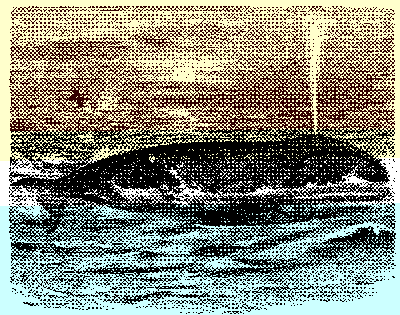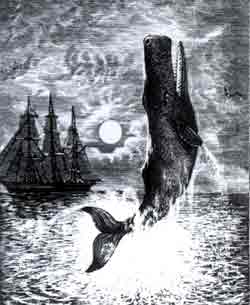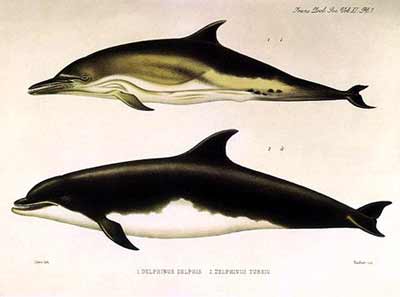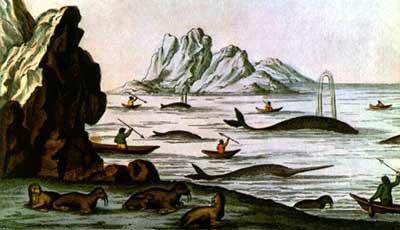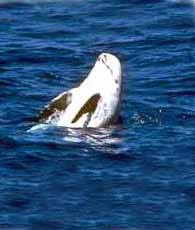|
MY ANTIGUA CARIBBEAN WHALES & DOLPHINS |
|
Antigua Whales and Dolphins of the Caribbean |
|
The State of Antigua and Barbuda, independent since 1981, is a constitutional monarchy within the British Commonwealth. The country includes the main island and well positioned Caribbean air hub of Antigua, the largest of the Leeward Islands, with some of the Caribbean's best direct jet connections to the US east coast, Canada, the UK and Europe. Thirty miles (48 km) north of Antigua is Barbuda, and the country also includes numerous small islands just off the north and east side of Antigua as well as the uninhabited island of Redonda, 25 miles (40 km) southwest of Antigua.
Great Bird Island has the fourth largest mangrove system in the Lesser Antilles and the extremely rare Antiguan racer snake. Guiana Island has the largest remaining forests and provides habitat for large colonies of seabirds, including roseate terns, brown noddies, and endangered whistling ducks. In 1997, however, it was announced by Prime Minister Lester Bird that these islands which had been proposed for national park status, were going to be developed as part of a luxury resort, including a 1000-room hotel, casino and golf course. To date, there has been considerable debate about the merits of this plan. Antigua has no dedicated commercial whale or dolphin watching, yet sailing charters, diving and nature tours sometimes encounter cetaceans. There is also some possible land-based cetacean watching. On the south coast, from hilltop venues on Shirley Heights east of English Harbour, humpback whales can sometimes be viewed in winter, as well as, at the mouth of nearby Indian Creek, bottlenose dolphins year-round. Most of the south coast is within 2 miles (3 km) of the 100 fathom (200 m) contour.
The giant coral reef surrounding
Antigua and Barbuda is estimated to be as large as 1,000 square miles (2600 sq
km), and the expansiveness of this reef means that there are many little
explored areas with sharks, barracuda and numerous reef fish species Some sites require
long boat trips but are definitely worth investigating. The best and most accessible dive
sites are off the south and west coasts. However, these may be notoriously spare of marine
life; at least one international travel guide (Fielding) has complained that the
government doesn't actively enforce the fishing ban within national marine parks, which has
affected some of the more popular sites. Compared to Antigua, Barbuda is a quiet,
undeveloped island with less than 2% of the country's population. Visitors to this
low-lying coral island tend to be bird watchers, divers or those visiting on yachts from Antigua
who want a beach to themselves. Barbuda is also accessible by ferry or by a short flight
from Antigua. Barbuda's Codrington Lagoon has the largest
frigate bird colony in the Lesser Antilles — this as well as the generally
undeveloped nature of Barbuda attract the more outdoors or ecologically-minded tourist.
The best time for bird watchers to visit is mating season from October to February. Along the west coast of Barbuda, from February to April, humpback whales are sometimes seen passing. Year round, from the southeast coast, north of Spanish Point, Atlantic spotted and bottlenose dolphins can sometimes be seen inshore in Pelican Bay. This land point is the closest to deep water on the island — approximately 4 miles (6.4kms) to the 100 fathom (200 m) contour. With the number of sightings from land on both Antigua and Barbuda, land-based nature tours that include cetaceans may well be possible in future, although land-based whale watching does not usually have a substantial economic element unless the cetaceans are very close or if boat-based whale watching is also part of the industry. It's worth keeping in mind that with the large number of ocean-going sailboats, the effective range for whale and dolphin watching might well be extended further offshore than in many other areas of the Caribbean. It could be worthwhile for cetacean surveys to be commissioned farther afield around the islands throughout the year, to determine if there are predictable locations and times. If there are, Antigua and Barbuda would provide an ideal opportunity to develop several kinds of whale/dolphin watching: Antigua, the yacht based upper end of the market, and Barbuda, the ecotouristic side. Acknowledgments: Nathan Gricks, Bendure and Friary 1998, Swanson and Garrett 1998, |
Why not visit one of our other Holiday destinations
ANTIGUA
BARBADOS
CORFU
CYPRUS
FLORIDA
GOSPORT
GRENADA
ST KITTS
ST LUCIA
TOBAGO
KENYA

